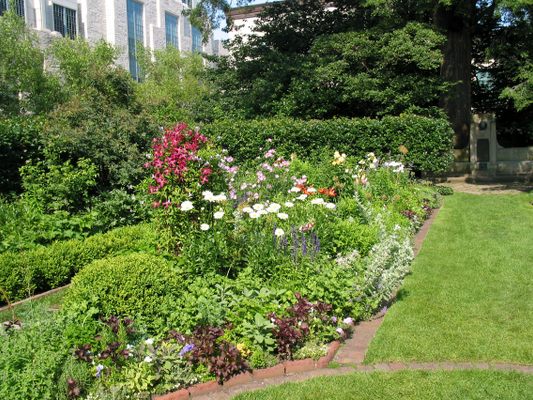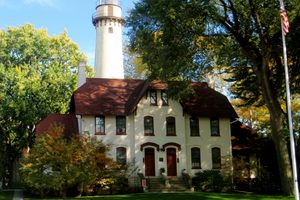About
Built in support of British allies during World War I, Northwestern University's Shakespeare Garden is the first of its kind in the United States. It's home to more than 50 different flowers and plants that appear throughout the works of William Shakespeare.
Construction on the Shakespeare garden began in 1916—the 300th anniversary of Shakespeare's death—after it was officially presented to the university by the Garden Club of Evanston. Today, the garden is a favorite place for late-night rendezvous and fairytale weddings (and everything in between), and has played host to a rotating cast of plants including rosemary, lavender, holly, pansy, poppy, peony, foxglove and of course, rose.
Jens Jensen, the renowned Chicago landscape architect behind the Cook County Forest Preserves, the Ravinia festival grounds, and numerous houses and estates in Chicago and beyond, modeled the space after the Tudor-style gardens of Elizabethan England. Though originally an intricate "knot-style" garden inspired by the popular Elizabethan-era book The Gardener's Labyrinth, the plantings were reformulated in a more traditional style by English garden designer John Brookes following his visit to Northwestern in 1990.
A hawthorn hedge, grown from seed imported from France, separates the looping symmetry of the garden itself from the campus beyond, in what Jensen called "a sun opening in the woods." Much of today's hedge is still composed of these original shrubs, some of which first took root more than 100 years in the past.
In 1988, the garden was listed on the National Register of Historic Places. Other Shakespeare gardens, spiritual descendants of the one at Northwestern, can be found far and wide across the United States, including Golden Gate Park in San Francisco and Central Park in New York City.
Related Tags
Know Before You Go
The garden is open daily from dawn until dusk and admission is free.
Published
January 7, 2019


































